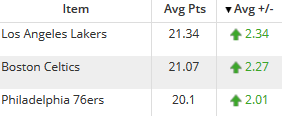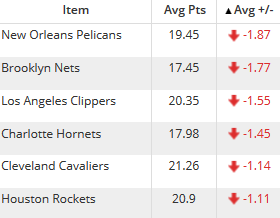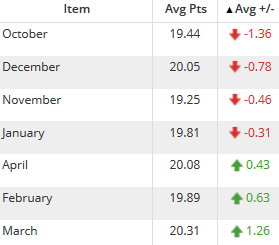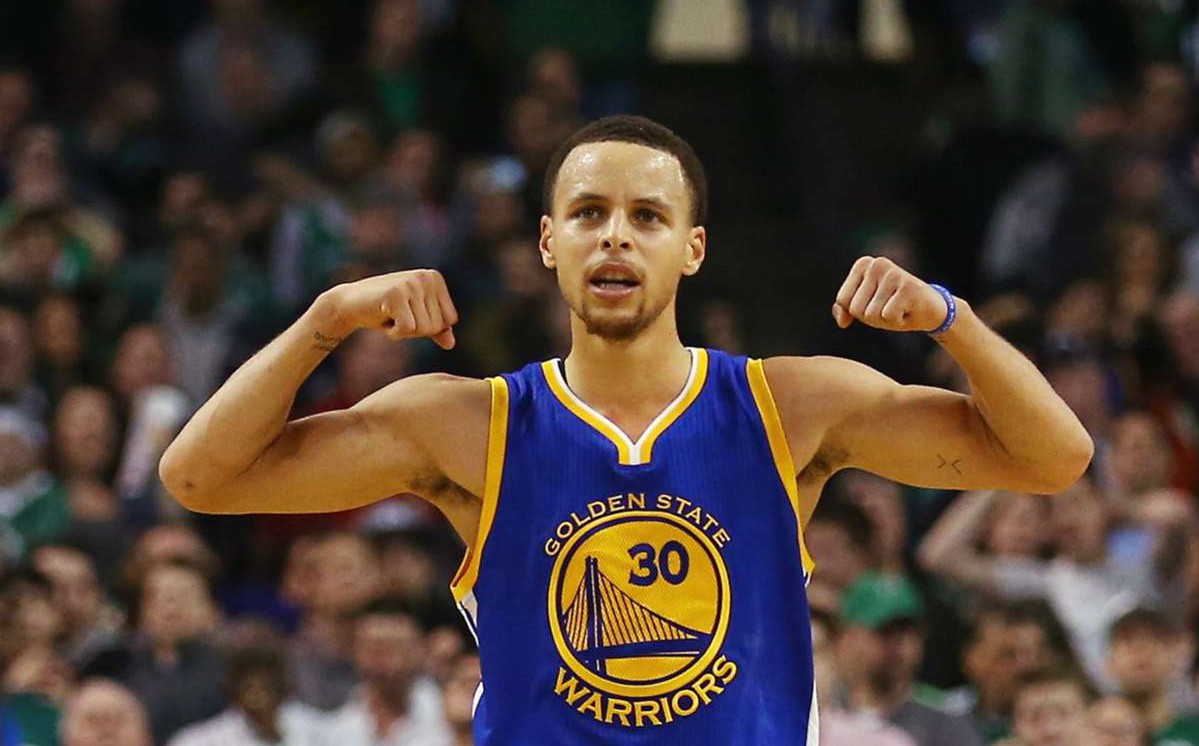A red flag usually goes up anytime a team is playing on back to back days in the NBA. Later in the season, certain coaches might flat out deactivate veteran players, but even excluding that risk, we have an impression that teams who’ve played more games in recent days fare worse than more rested ones. I’ll be using some of our trends today to identify to what degree this plays a factor in NBA DFS.
To set baseline expectations, I just ran a basic filter to see how teams did when there were x days between their games:
|
Days |
Plus/Minus |
|
1 |
0.72 |
|
2 |
0.58 |
|
3 |
0.25 |
|
4 |
0.50 |
|
5+ |
1.85 |
Oh. There are fewer results when you start getting up to four or five days of rest, but there is a large sample size for the first three and also a clear downward trend. I did apply a “Plays at least 10 minutes a game” filter to exclude end of the bench guys, but there are still a lot of different types of players being included in the result set, which I think is the main reason it didn’t match up with our expectations.
When I run the same test but only look at players who cost $7000 and above on DraftKings, the disadvantage of playing on back to back days is evident:
|
Days |
Plus/Minus |
|
1 |
-0.44 |
|
2 |
0.53 |
It’s interesting to look at the individual teams to see who did well last year
I think really this is more of a pricing thing than anything. Players on the Lakers, Celtics, and 76ers were rarely priced at premium levels, while the Pelicans, Clippers, Cavaliers, and Rockets all included the most expensive players. Anthony Davis in particular lost over four points from Plus/Minus when playing in a back to back.
I also thought that back to back sets during the second half of the season would lead to certain Plus/Minus death. So I was surprised to see the results below. The main thing with February-April back to back sets is players are more likely to get scratched in those games. But as long as the player is in the lineup, it looks like the month doesn’t have much of an effect here:
There was also a big difference when looking at whether the team was playing a back to back as part of a road trip or a home stand.
It’s one thing to play two home games in two days, but it’s another to play one game, travel after the game, arrive in another city in the very early morning, and then play another game the next day.
The other thing to watch out for is how much rest the opponent has had. There’s not a huge difference in the Plus/Minus column, but there’s something like 25,000 results involved with the query. I think over the large sample size, the differences are significant. It’s clear there is a small advantage to be gained when playing a team that hasn’t had as much rest.
|
Days |
Plus/Minus |
|
1 |
0.68 |
|
2 |
0.55 |
|
3 |
0.46 |
Don’t build lineups by hunting down teams whose opponent is on a back to back, but it’s a nice tiebreaker if there are a couple of players that you’ve valued similarly on a given slate. When the team in question is playing a back to back, definitely avoid their high priced players. But if the price is right, this hasn’t been a reason to auto-fade. Several teams did very well playing back to backs in terms of Plus/Minus in 2014-2015










